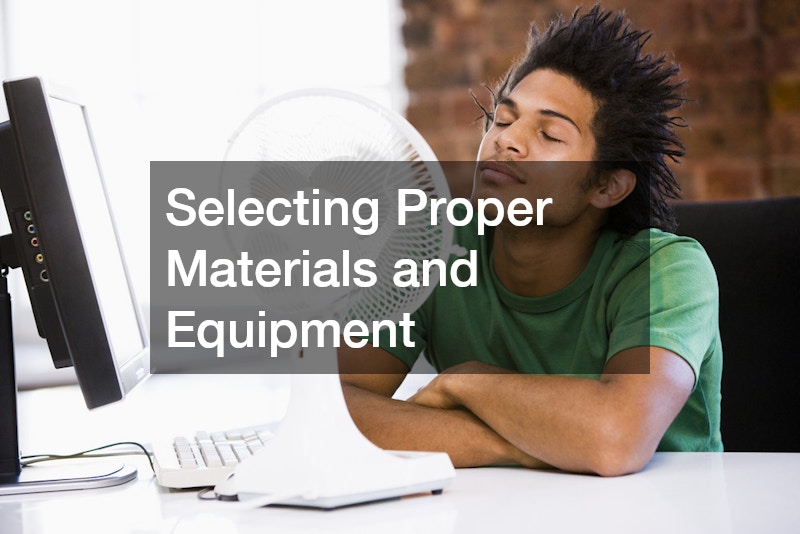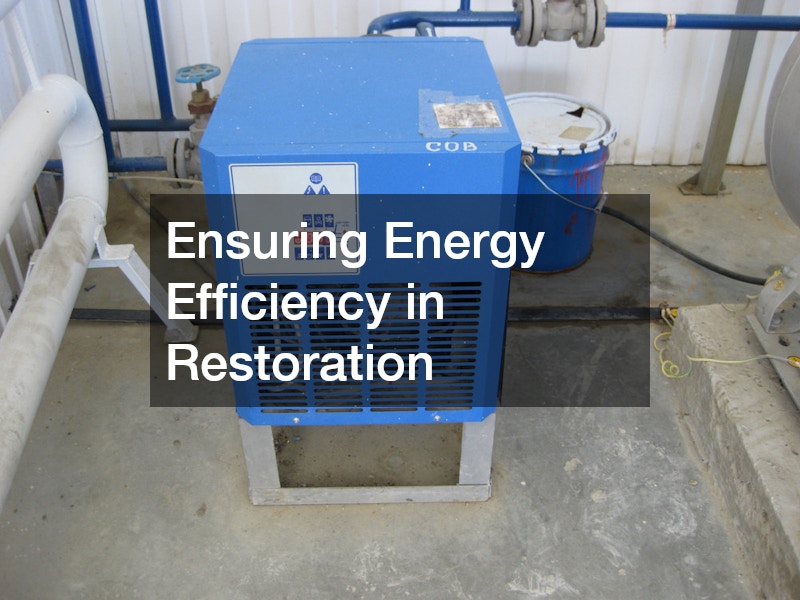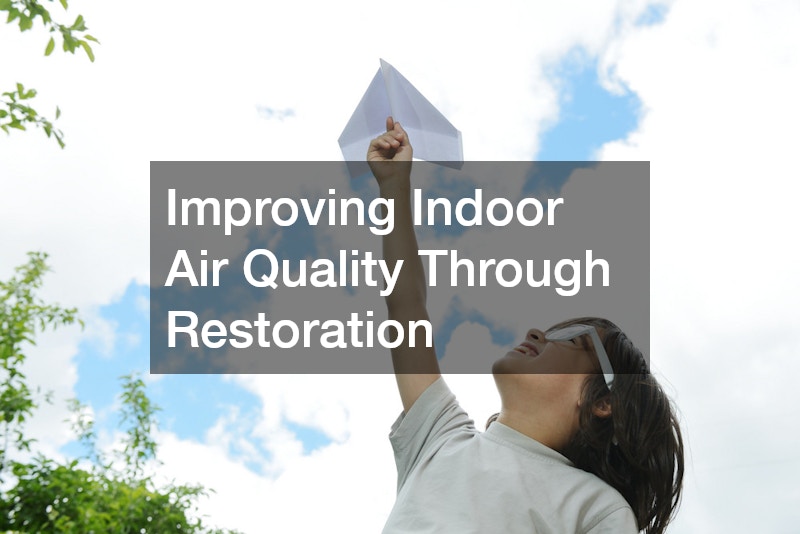Assessing Your Home’s HVAC System
HVAC restoration is an essential process that ensures heating, ventilation, and air conditioning systems are working efficiently, meeting energy standards, and enhancing indoor air quality. A well-executed HVAC restoration plan not only optimizes system performance but also significantly extends the lifespan of equipment. Restoration processes are vital for maintaining comfort and safety, reducing operational costs, and minimizing the need for frequent repairs or replacements. Given the complexity of HVAC systems, this work involves a comprehensive understanding of each component—from ducts and filters to condensers and thermostats—to restore full functionality without compromising on performance. An overall home remodeling design would be able to give specifics on your HVAC system.

Understanding the Basics of HVAC Restoration
HVAC restoration begins with a solid understanding of the underlying principles that make HVAC systems functional and efficient. Unlike basic maintenance, which may involve simple repairs or filter replacements, restoration requires a thorough assessment and often complex repairs or component replacements. Technicians specializing in HVAC restoration must have a broad knowledge of how various elements—such as air handlers, ductwork, and heat exchangers—work in unison to provide effective climate control.
When it comes to delivering a top-quality HVAC service, technicians need to inspect each component meticulously. From identifying leaks and evaluating airflow to cleaning coils and testing thermostats, every part of the system contributes to overall performance. Proper restoration often involves recalibrating or replacing parts, securing connections, and even upgrading components to newer, more efficient models when needed.
Assessing the Condition of HVAC Systems
Before beginning the restoration process, it’s crucial to assess the condition of the HVAC systems in their entirety. This assessment typically includes evaluating the age, performance, and current issues affecting the system. Technicians start by looking for signs of wear and tear, such as strange noises, inconsistent temperatures, and visible rust or corrosion on parts. This inspection helps them determine whether HVAC restoration is feasible or if the system might need a more extensive overhaul or even replacement. By assessing the condition early, HVAC professionals can set realistic expectations about the restoration process and the improvements it can deliver.
In a more detailed assessment, technicians focus on diagnosing the specific issues within the HVAC systems. They may conduct tests on the ductwork to check for air leaks or use advanced diagnostic tools to measure system pressures and temperatures accurately. These tests allow them to pinpoint problems like clogged filters, malfunctioning fans, or underperforming compressors, which can significantly reduce system efficiency. Once the specific issues are identified, HVAC professionals can develop a tailored restoration plan that addresses both minor and major issues, ensuring the restored HVAC systems operate at peak performance.
Selecting Proper Materials and Equipment
Choosing the right materials and equipment is a fundamental part of HVAC restoration, as these elements directly affect the system’s durability and efficiency. Materials used in ductwork, insulation, and sealing must withstand temperature variations and frequent airflow changes without degrading quickly. Similarly, equipment like filters, coils, and compressors must be of high quality to support the restored system’s functionality. HVAC restoration experts prioritize using durable, reliable parts to minimize future issues and ensure the system operates smoothly over the long term. Selecting appropriate materials and tools allows technicians to achieve a high standard of restoration that can significantly enhance system efficiency.
On a more specific level, technicians must evaluate each component’s compatibility with the existing HVAC setup. For example, selecting filters with the right Minimum Efficiency Reporting Value (MERV) rating is essential to balance air quality with airflow resistance. In some cases, restoring HVAC systems may involve upgrading to newer, more energy-efficient parts, such as variable-speed motors or smart thermostats, to optimize overall performance. With careful consideration of the materials and equipment used, HVAC restoration professionals can create a tailored solution that enhances system resilience, reduces energy consumption, and provides long-lasting results.
Implementing Safe Restoration Practices
Safety is a top priority when performing HVAC restoration, as it involves handling various electrical components, chemicals, and potentially harmful debris. Restoration professionals are trained to follow industry-standard safety protocols, such as turning off power sources before working on electrical parts and wearing appropriate protective equipment when dealing with hazardous materials like refrigerants. These precautions are essential not only for the technicians’ safety but also to ensure that the HVAC system functions properly after restoration.
In addition to personal safety practices, technicians focus on ensuring that restored HVAC systems meet all regulatory codes and standards. This includes proper disposal of hazardous materials, careful handling of refrigerants to prevent leaks, and thorough testing of the system post-restoration to confirm safe operation. Following these safe practices during HVAC restoration also contributes to better air quality, as proper sealing and ventilation prevent the buildup of contaminants in the indoor environment. By adhering to a safety-first approach, HVAC professionals maintain both high-quality service standards and a secure environment for building residents. Consulting paving companies can also be beneficial.

Ensuring Energy Efficiency in Restoration
Energy efficiency is a central goal in HVAC restoration, as it directly impacts operating costs and environmental sustainability. Restoring an HVAC system often involves identifying and addressing energy-draining issues, such as leaky ductwork, outdated compressors, or inefficient thermostats. By improving these elements, HVAC restoration specialists help property owners reduce energy consumption, resulting in lower utility bills and a reduced carbon footprint. Optimizing energy efficiency during HVAC restoration not only benefits the environment but also maximizes the long-term return on investment for the property owner.
In specific applications, enhancing energy efficiency can involve upgrading components to high-efficiency alternatives or retrofitting the system with smart technology. Technicians may recommend programmable thermostats, which allow users to schedule temperature adjustments based on usage patterns, or variable-speed motors, which can adjust airflow to match real-time needs. Additionally, proper insulation and duct sealing can drastically reduce energy losses. An insulation contractor can ensure this is true. Through these targeted efforts, HVAC restoration professionals can transform outdated systems into efficient, environmentally friendly setups that offer reliable comfort without excessive energy costs. A plumbing company would be able to assess your current system and give a professional recommendation. Plumbers can give valuable insight to your home’s energy efficiency.
Preventing Common HVAC Restoration Mistakes
Preventing common mistakes is essential in HVAC restoration to ensure the system’s optimal performance and longevity. Errors such as using incompatible parts, neglecting to properly seal ductwork, or failing to recalibrate the thermostat can reduce the efficiency of the restoration efforts. HVAC professionals focus on best practices to avoid these issues, from using high-quality materials to carefully following each step of the restoration process. By taking a methodical approach, technicians help ensure that every component of the HVAC system functions correctly after restoration, ultimately leading to a more reliable and efficient setup.
On a more detailed level, HVAC technicians are trained to address specific problems that can arise if mistakes are made. For instance, failing to properly clean or replace filters can compromise air quality and reduce system efficiency. Similarly, overlooking minor issues in the ductwork or electrical connections can lead to larger problems in the future, potentially requiring additional repairs. By understanding and avoiding these common mistakes, HVAC restoration specialists can deliver a seamless restoration process that ensures both the functionality and durability of the HVAC system.

Improving Indoor Air Quality Through Restoration
Indoor air quality is a significant concern that HVAC restoration can directly improve, especially in buildings where systems have aged or encountered frequent use. Over time, HVAC systems can accumulate dust, mold, and other pollutants, which are then circulated throughout the building. Restoration helps remove these contaminants by cleaning and replacing parts as needed, improving airflow, and reducing the likelihood of pollutants re-entering the system. Enhancing indoor air quality through HVAC restoration not only creates a healthier environment for occupants but also aligns with best practices for overall building maintenance.
In a specific application, technicians may implement air-purifying filters and advanced filtration technology to further improve air quality. For example, using HEPA filters or UV light purifiers can significantly reduce airborne allergens, bacteria, and viruses, making the air safer and more comfortable for occupants. Properly sealing the ductwork also plays a crucial role in preventing outside contaminants from entering the HVAC system. Through these targeted efforts, HVAC restoration professionals provide solutions that promote better indoor air quality, leading to a cleaner and more comfortable environment for building residents.
Training and Certification for HVAC Professionals
Training and certification are critical for HVAC professionals to perform restoration work effectively and safely. The technical nature of HVAC restoration requires specialized knowledge in various areas, from electrical systems to airflow dynamics. Certified HVAC professionals undergo rigorous training to ensure they are equipped to handle complex restoration tasks, which helps ensure the system is restored correctly and efficiently. With certification, HVAC technicians demonstrate their commitment to upholding industry standards, which ultimately benefits clients by guaranteeing a high level of expertise in each restoration project.
On a practical level, trained HVAC professionals bring advanced skills that contribute to the quality of the restoration. For instance, they are familiar with the latest tools and techniques, allowing them to diagnose issues accurately and execute repairs with precision. Their training also covers safety protocols, so they know how to manage potentially hazardous materials and follow regulatory standards. By investing in certified HVAC professionals for restoration projects, clients can trust that their systems are in capable hands, receiving the highest standard of care that ensures long-lasting performance and efficiency.

Following Industry Standards and Guidelines
Adhering to industry standards and guidelines is crucial in HVAC restoration to ensure the safety, efficiency, and reliability of the restored system. The HVAC industry has established regulations that technicians follow to provide consistent, high-quality restoration services. These guidelines cover aspects such as energy efficiency, environmental protection, and proper handling of refrigerants. By following industry standards, HVAC professionals help ensure that restoration efforts comply with safety regulations and deliver an efficient system that meets current performance benchmarks.
On a more specific level, adhering to standards allows technicians to address particular system requirements, such as EPA guidelines for refrigerant management or ASHRAE standards for air quality. Ensuring these standards are met throughout the HVAC restoration process guarantees that the system will operate optimally without posing risks to occupants or the environment. Industry guidelines also provide a framework for quality assurance, allowing clients to feel confident that the restored HVAC system has been serviced to the highest standards and is built to perform safely and efficiently. An excavating contractor can offer insight into your HVAC’s internal system.
Regular Maintenance After HVAC Restoration
Regular maintenance is essential after HVAC restoration to sustain the benefits achieved through the restoration process and extend the system’s longevity. Routine maintenance, including filter changes, coil cleaning, and inspections, helps maintain the system’s efficiency and prevent future issues. After an HVAC restoration, technicians often advise setting up a regular maintenance schedule to keep the system in top condition, ensuring that energy efficiency improvements and air quality enhancements remain effective over time. With consistent care, HVAC systems are less likely to experience breakdowns, resulting in lower long-term costs for property owners.
In specific terms, maintenance tasks tailored to the restored system can address any unique needs identified during restoration. For instance, if technicians noted that certain components were more prone to wear, regular inspections of those areas can help catch minor issues before they escalate. This proactive approach ensures that the restored HVAC system operates smoothly, providing continuous comfort and efficiency. By committing to a regular maintenance schedule, property owners can protect their investment in HVAC restoration, preserving the system’s performance and reliability for years to come. A flooring company can help note if there are any odd changes in your HVAC system.
Keeping Your High-Quality HVAC Service Intact
HVAC restoration is a comprehensive process that requires expertise, attention to detail, and adherence to industry standards. Through each stage—whether selecting proper materials, implementing safe practices, or maintaining the restored system—HVAC professionals work to bring aging or underperforming systems back to peak functionality. The restoration process addresses both visible and hidden issues within the system, from improving energy efficiency and indoor air quality to ensuring safety for building occupants. With a restored HVAC system, property owners benefit from enhanced comfort, reduced energy costs, and a system built to last.


